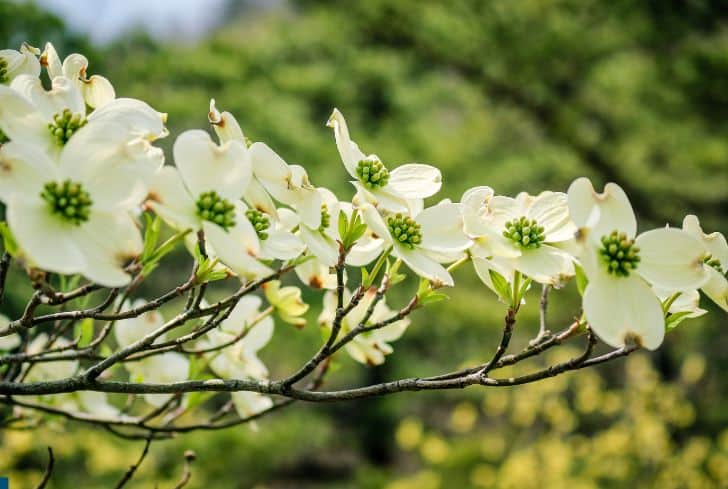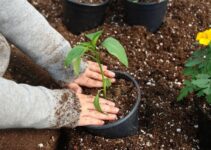Dogwood trees are popular for their spectacular reddish and pinkish flowers. Many also admire the tree because they are easy to maintain. All you need is high-quality mulch and good soil.
Collectively, they improve the health of your dogwood tree and also ensure that the tree is consistently vibrant. But having said that, are coffee grounds good for dogwood trees? Can you use coffee grounds in the mulch of other trees like pine or citrus? Let’s find out.
Do Dogwood Trees Like Coffee Grounds?
Dogwood trees thrive best in moist, nutrient-rich, and acidic soil that also drains quite well. Even though you won’t need to purchase something exorbitantly expensive for these trees, you would still need a steady source of moisture to ensure their overall development. You can use your regular garden soil with a combination of sand, moss, barks, and/or any other ingredient you prefer.
Another unique attribute of dogwood trees is that they especially prefer mulch. You can use several naturally available elements to create the mulch. This can be anything ranging from leaf shavings, clippings of small grass, and tiny chips of cocoa. But do coffee grounds fit into this list?
Luckily, they do. As we already mentioned, Dogwood trees enjoy acidic soil and because coffee grounds are naturally acidic, the soil will be ideal for your tree to thrive. However, do not go overboard with the coffee beans in the mulch. Make sure you only use it in moderation and combine it with other natural elements.
In the next few sections, we will learn which plants prefer coffee grounds more than others and the many ways you can use these grounds in your garden.
Which Plants Like Coffee Grounds Most?
If you thought dogwood is the only plant that enjoys coffee grounds, think again. In this section, we will tell you all about the other plants that equally enjoy coffee grounds in their mulch.
So, what are the plants that love these grounds? One of the top options would be roses that thrive well when the soil contains coffee grounds. Next, we come to rhododendrons, hollies, hydrangeas, and lilies. All of these plants are mostly low maintenance and like your roses, they too enjoy the acidity from coffee grounds.
In the case of vegetables, we are looking at carrots and cabbages. Because acidic soil is a prerequisite for these veggies, you might want to add some coffee grounds to their soil.
Are Coffee Grounds Good For All Trees?
Having said that, coffee grounds aren’t ideal for all plants. For instance, you should never use it as a mulch for tomatoes or something like alfalfa as it might cause the plants to dry out.
Also, even though some people advocate using these grounds in fruit gardens, several gardening enthusiasts believe that they add excess caffeine to the soil that affects the natural flavor of the fruits.
How To Use Coffee Grounds in the Garden?
Now that you know which trees work with coffee grounds and which ones don’t, let’s learn more about how to use these grounds in your home garden.
1. Add them to your compost bin
One of the best ways to utilize coffee grounds is by dumping them in your compost bin. If you are familiar with composting, you probably know that the two common compost materials are either brown or green.
Even though the color of the coffee might be brown it would still be categorized as green when it comes to the compost jargon. This implies that coffee grounds are rich in nitrogen along with other essential nutrients like calcium and potassium among others.
You can add a bunch of used filters of coffee along with these grounds. However, while adding your green compost which is the coffee ground, make sure it is well balanced with the brown compost which includes other items like leaves, branches, twigs, pieces of paper, etc. When it comes to a ratio, the ideal amount between brown and green should be 4:1.
2. Fertilizing your soil
Another excellent way to use these grounds in your garden is by directly adding them to the soil. You can either add some of the grounds on the topsoil or allow it to rest for a while.
Alternatively, you can also provide smaller doses of the ground after mixing it with a range of dry stuff. Unless you do this, the grounds may not provide as much nitrogen.
The coffee grounds that we use come with a balanced pH level, so you don’t need to worry about excessively acidic soil. Just make sure you do not use coffee grounds in bulk, piling them up. We advise against this because the small particles can soon collaborate to create a form of water-proof barrier in your porch or garden.
Finally, you can also fertilize your soil with tea-based coffee grounds. To do this just add two cups of the ground to a bucket of water with a 5-gallon capacity.
Allow the ingredients to combine overnight. The next morning, you can use this tea as a fertilizer for your potted plants in the garden. You can also get the concoction in a spray bottle and spray it on the leaves.
3. Food for the worms
If you have a worm bin, we recommend adding coffee grounds at least every week. Worms thrive on these grounds and would love it when you add it in small amounts. Avoid adding excessive amounts because you don’t want the worms bothered by acidity.
Ideally, one cup of coffee grounds should work for a week in case you have a small or medium-sized bin. The grounds will feed the worms who in turn will be automatically attracted to your plants when you team them up with the soil to create fertilizer.
4. Keeps pests at bay
While many don’t know this, the right amount of coffee grounds can keep those pesky pests away from your garden. As you already know, coffee grounds contain some level of acidity, so when you place a pile of these grounds near plants that are prone to slugs, you might end up creating a successful space to keep your plant pest-free.
In case you do not want cats to litter your garden, then too you might want to use the above strategy. Because several cats don’t enjoy the smell of these grounds, they will be naturally deterred from defecating in your garden.
5. Place them at the base of appropriate plants
If you have a bunch of plants that thrive on acidic soil like rhododendrons and hydrangeas among others, you might want to add coffee beans at their base. Because these plants enjoy acid, you can even add fresh coffee grounds to the base.
Having said that, avoid using these grounds on saplings or plants that are still very young as it might affect their growth rate.
6. Staining benches
So, you have finally built the organic garden of your dreams and it has everything starting from plants to a beautiful little bench. But most wooden benches end up getting damaged due to wear and tear, rain, and other adverse weather conditions.
A simple way to deal with this is by staining the benches with used coffee grounds. This adds an excellent shade of sepia to the bench and doesn’t affect your garden either.
7. Oyster mushrooms
You can add coffee grounds to the soil for an easy substrate for oyster mushrooms. Coffee grounds don’t just boost the growth of mushrooms, but the brew in the ground pasteurizes them. Just get a clean container to pile your grounds in. Next, add some mushroom spawn and you will soon have the most delicious oyster mushrooms over the next few days.
Do Bay Trees Like Coffee Grounds?
Bay trees are not known to like coffee grounds. So, if you are planning to add them at the base of a Bay plant, exercise caution before doing the same.
Are Coffee Grounds Good For Citrus Trees?
Citrus trees like oranges may benefit from coffee grounds. When you add these grounds to the soil, the nutrients begin to improve, and the soil now has higher quantities of potassium, manganese, nitrogen, and magnesium. Overall, this improves the structure of the soil enabling your citrus plants to thrive.
Are Coffee Grounds Good For Pine Trees?
While some variants of pine trees may thrive better if you add coffee grounds to their base, such is not the case for the majority of these trees.
Uses of Coffee Grounds on Plants in the Garden
You can use coffee grounds in several ways for your garden plants. For instance, you can add the grounds at the base of your acid-loving plants so that they thrive better. Next, you can use them to create excellent fertilizer and mulch that works well for almost all trees.
Third, you can prevent your trees from pest infestation by piling up these grounds around trees that are most likely to be attacked by pests. Finally, you can use them in your soil to grow stunning mushrooms as we mentioned earlier.






